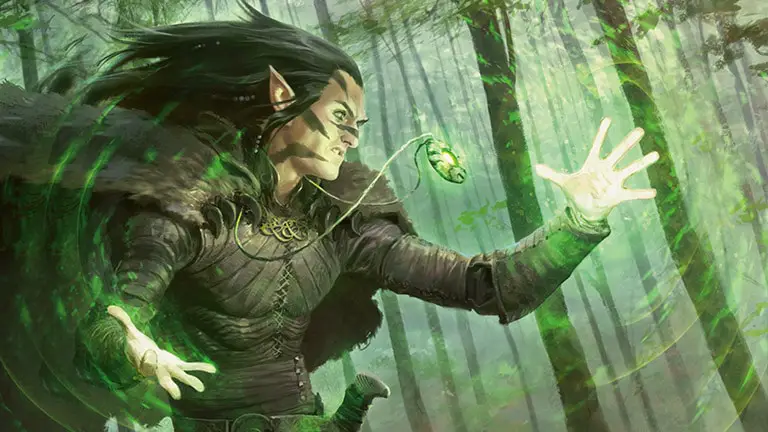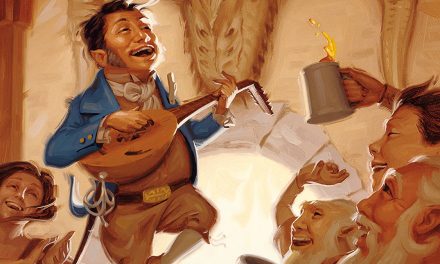Few things are as adaptable as nature and the Druid in D&D 5e is the ultimate proof of this.
Whether summoning or turning into fierce animals, conjuring the elements, or healing their party, the Druid is a Swiss-Army Knife of a class.
In this guide, we’ll take a deep dive into the Druid class. You’ll see all of the Druid’s features and options as well as get tons of tips for optimizing your druid.
This is a big one, so let’s get right into it! This is the Ultimate Class Guide to the Druid in D&D 5e!
Druid in D&D 5e Class Guide
Wielding the raw power of nature, there are few challenges that a Druid cannot overcome.
Some Druids are powerful casters who can turn the battlefield itself against their enemies. Others focus on changing their form to provide extra support for their party with tooth, claw, and talon. Yet still others choose to focus on the healing qualities of nature to keep their allies standing strong on their adventures.
Versatility is the name of the Druid’s game and they can easily fill numerous roles within the party.
You can find the Druid class on page 64 of the Player’s Handbook.
The Druid Table
| Level | Proficiency Bonus | Features |
| 1 | +2 | Druidic, Spellcasting |
| 2 | +2 | Wild Shape, Druid Circle |
| 3 | +2 | |
| 4 | +2 | Wild Shape Improvement, Ability Score Improvement |
| 5 | +3 | |
| 6 | +3 | Druid Circle Feature |
| 7 | +3 | |
| 8 | +3 | Wild Shape Improvement, Ability Score Improvement |
| 9 | +4 | |
| 10 | +4 | Druid Circle Feature |
| 11 | +4 | |
| 12 | +4 | Ability Score Improvement |
| 13 | +5 | |
| 14 | +5 | Druid Circle Feature |
| 15 | +5 | |
| 16 | +5 | Ability Score Improvement |
| 17 | +6 | |
| 18 | +6 | Timeless Body, Beast Spells |
| 19 | +6 | Ability Score Improvement |
| 20 | +6 | Archdruid |
Druid Class Features
While all Druids serve and bond with nature in a number of unique ways, there are some things that they all have in common. These are the class features that all Druids have.
Hit Points
Hit Dice: 1d8 per Druid Level
Hit Points at 1st level: 8 + your Constitution modifier
Hit Points at Higher Levels: 1d8 (average of 5) + your Constitution modifier per Druid level beyond 1st
Proficiencies
Armor: Light Armor, Medium Armor, Shields
As a note, Druids generally avoid metal equipment. You can learn more about Druids and metal armor by reading this article!
Weapons: Clubs, Daggers, Darts, Javelins, Maces, Quarterstaffs, Scimitars, Sickles, Slings, Spears
Tools: Herbalism Kit
Saving Throws: Intelligence, Wisdom
Skills: Choose two from Arcana, Animal Handling, Insight, Medicine, Nature, Perception, Religion, and Survival
Druid Starting Equipment
In addition to any equipment you receive from your background, you start with the following equipment:
- A wooden shield OR any simple weapon
- A scimitar OR any simple melee weapon
- Leather Armor, an Explorer’s Pack, and a Druidic Focus
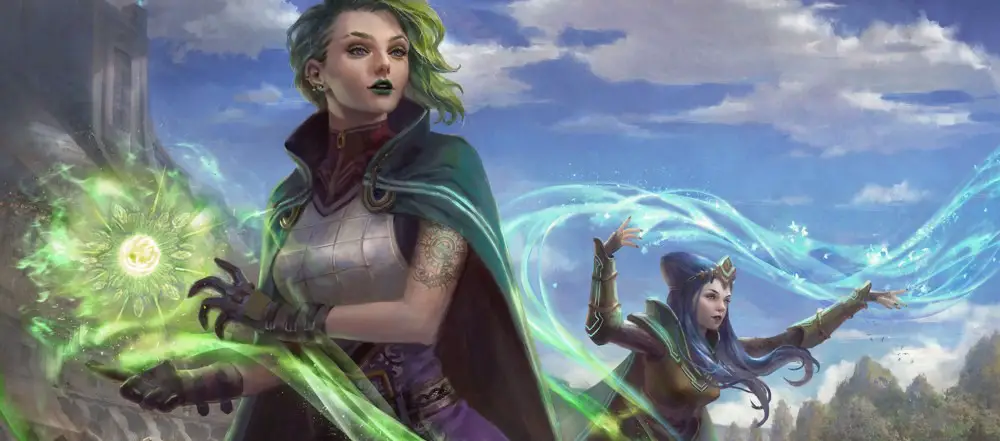
Druidic (Level 1)
Druidic is the secret language of Druids. It can be spoken or used to leave hidden messages for others who understand the language.
Those who know the language automatically spot such hidden messages. Those who do not know Druidic must succeed on a DC 15 Perception check to spot it, but will need magic or a translator to know what it says.
Secret languages are fun and this may come up in your campaign. While it’s hardly a core feature of the Druid class, it does open up some interesting opportunities for your story’s progression!
Spellcasting (Level 1)
Druids gain the ability to cast spells at level 1. As they level up, Druids show themselves to be very versatile casters with a great blend of spells for any situation. Whether you’re looking for healing, damage, control, or general support spells, the Druid has you covered!
Because there is a lot to go over with the Druid’s spellcasting ability, we’ll cover it in more detail later in this article.
Wild Shape (Level 2)
The Druid gains access to their iconic Wild Shape ability at level 2.
For Druids who choose the Circle of the Moon, this is their core ability. Taking the form of all manner of beast, these Druids can hold their own in combat with ease!
For Druids who take up other Circles, Wild Shape is still very useful for its utility. Being able to take the form of beasts makes it easier to scout or get out of a sticky situation in a pinch!
Some of these other Circles allow the Druid to use their Wild Shape charges for other abilities. The Circle of Stars, for example, can use a Wild Shape charge to instead assume a Starry Form with its own unique abilities.
This ability can admittedly be a little confusing or overwhelming to players. While this is meant to be a complete (but quick) guide to the Druid class, I strongly recommend that you check out our other article that covers all of the ins and outs of the Wild Shape ability!
Oh, and by the way…
It is very wise to pick up a copy of the Monster Manual if you’re playing a Druid. Being able to reference the stats (and see your options) for beasts that you can turn into is very handy.
Trust me: your DM will thank you.
You can pick up your copy of the 5e Monster Manual on Amazon by clicking here.
Druid Circle (Level 2)
At level 2, the Druid chooses a Circle to join. These Circles are subclasses for the Druid that expand their abilities and better define how the character plays.
As of the time that this article is being written, there are 7 officially published Circles for Druids to choose from. Two are found in the Player’s Handbook, two others are found in Xanathar’s Guide to Everything, and the newest three are in Tasha’s Cauldron of Everything.
We’ll cover the available Druid Circles in more depth later in this article.
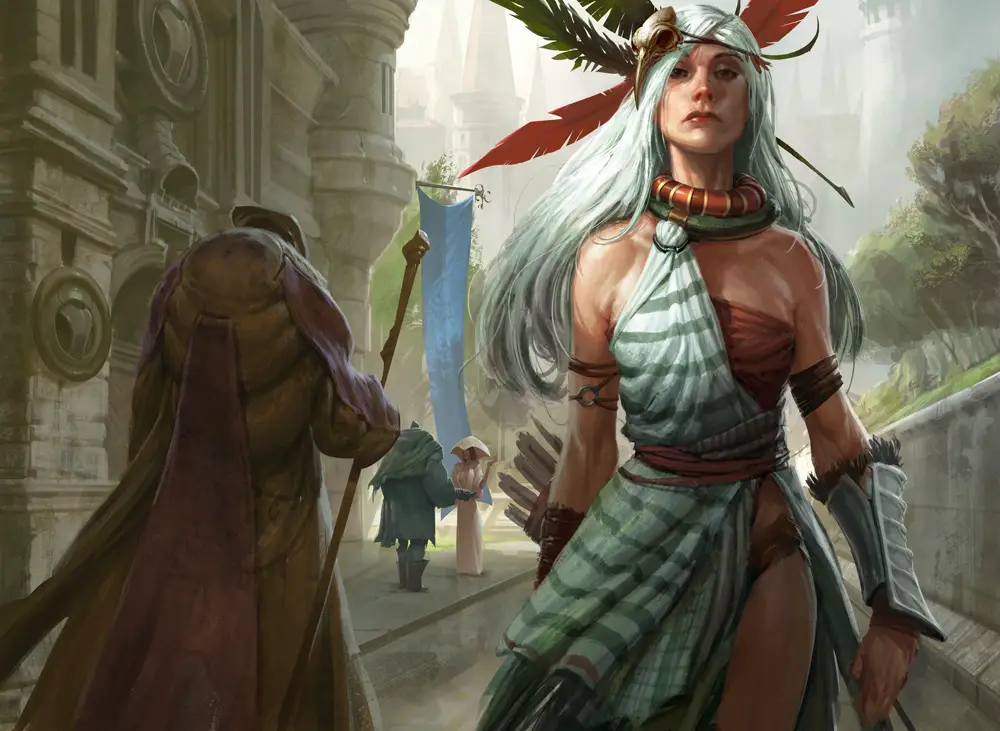
Timeless Body (Level 18)
When your Druid reaches 18th level, they begin to age more slowly thanks to the Timeless Body feature.
For every 10 years that the Druid would age, they instead only age 1 year.
This probably won’t really get a chance to show up in your game, but it’s some cool flavor!
However, that’s not all you gain at this level…
Beast Spells (Level 18)
In addition to the Timeless Body feature at level 18, the Druid gains the ability to cast spells while using their Wild Shape ability.
While they can’t provide material components in their beast form, they don’t need to worry about having to perform the verbal or somatic components of the spell.
Being able to blend in as just a harmless bird while casting powerful spells like Call Lightning or Erupting Earth is a fun experience.
Unless you’re casting spells like Sunbeam that are clearly coming directly from you, it’s unlikely that most enemies will realize what you’re up to. If they see a pigeon shooting lasers from its eyes, they might suspect some funny business.
Archdruid (Level 20)
At level 20, your Druid gains the Archdruid ability. With this, they have unlimited uses of their Wild Shape ability.
This is handy for all Druids, but those of the Circle of the Moon (which offers more/stronger Wild Shape options) will be so happy that they won’t know what to do with themselves.
With the ability to change their shape each round (with a whole new set of hit points), a level 20 Circle of the Moon Druid is all but entirely immortal.
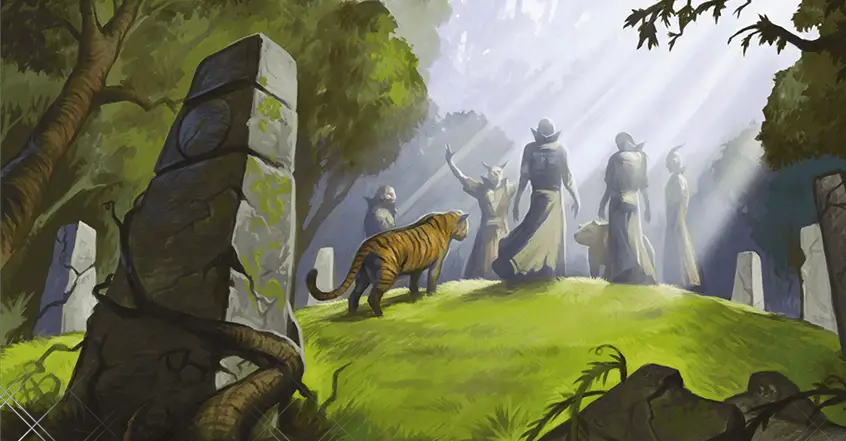
Optional Class Features for Druids
Tasha’s Cauldron of Everything was released in late 2020 and added a ton of new content and options to 5e.
In addition to the three Druid Circles presented in the book, there are a few new optional features available to Druids.
As always, check with your DM first to make sure that these optional features are at-play in your game. Personally, I think they do a lot to round out the class in a way that feels both natural and meaningful.
Additional Druid Spells
First things first, the Druid gains a large amount of additional spells that they are able to prepare at the beginning of each day.
Keep in mind that these levels are the spells’ levels and not the Druid’s level.
| Spell Level | Spells |
| 1 | Protection from Evil and Good |
| 2 | Augury (ritual), Continual Flame, Enlarge/Reduce, Summon Beast |
| 3 | Aura of Vitality, Elemental Weapon, Revivify, Summon Fey |
| 4 | Divination (ritual), Fire Shield, Summon Elemental |
| 5 | Cone of Cold |
| 6 | Flesh to Stone |
| 7 | Symbol |
| 8 | Incendiary Cloud |
Wild Companion
I have to admit, it always irked me that Druids don’t just naturally have the option to have a little companion. This optional feature remedies that!
The Druid can expend one use of their Wild Shape to cast the Find Familiar spell. This does not require any material components.
The familiar is a Fey creature instead of a Beast. Unlike a regular casting of Find Familiar, the familiar lasts for a number of hours equal to half of your Druid level.
Cantrip Versatility
Take a cantrip that just isn’t working out as well as you thought or hoped it would?
With the optional Cantrip Versatility feature from Tasha’s Cauldron of Everything, you can replace your known cantrips at levels 4, 8, 12, 16, and 19 if you so choose.
It has to be a cantrip that you learned from the Druid’s Spellcasting feature and the new cantrip must be from the Druid spell list.
The Druid’s Role in the Party
At the core of the Druid class’s functionality, the Druid shines best as a Healer, Utility, and all-around Support caster.
However, it would be a gross over-simplification to pigeon-hole them as being an “almost Cleric.”
All of the Circles available to the Druid do a great job at reinterpreting all that Druids have to offer a party. While they’re exceptional Support classes, they can also make formidable front-line tanks and damage dealers.
If you want to learn more about what all of that means, check out our article on Character Roles and Party Composition!
Because Druids are so incredibly versatile, they do a great job at filling holes in the party’s composition while also reinforcing other roles in the party.
In a game like D&D where things tend to stay largely freeform, having options is a wonderful thing!
Subclasses
At level 2, the Druid takes a major leap forward in terms of abilities. Not only do they gain access to their Wild Shape ability, but they also choose a Druidic Circle to join.
It’s a big decision to make at such an early level and will greatly affect how the character plays going forward. Of course, I have my own opinions/preferences on the Druid Circles, but you are certain to find a Circle that perfectly fits your vision for your character.
We’re going to go over each of the subclasses pretty quickly here. For each Circle, we’ve also published guides that take deeper dives into the ins and outs of each option! There will be links to those guides in each section.
Circle of the Land
Check out our Circle of the Land Druid 5e Guide
Pulling from the power of a specific environment that you choose upon becoming a Circle of the Land Druid, this subclass is pure Druid spellcasting. Members of this Circle uphold oral traditions and pass down ancient wisdom and knowledge.
- Bonus Cantrip (Level 2): Get an extra cantrip from the Druid list.
- Natural Recovery (Level 2): The Druid’s version of the Wizard’s Arcane Recovery. This allows you to recover some of your expended spell slots during a short rest.
- Land’s Stride (Level 6): No movement penalties for moving through nonmagical difficult terrain. Nonmagical plants also won’t slow or harm you. Against magically created or manipulated plants, you have advantage on any saving throws.
- Nature’s Ward (Level 10): You are immune to poison and disease. Additionally, you cannot be charmed or frightened by Fey or Elemental creatures.
- Nature’s Sanctuary (Level 14): Beasts or plant creatures are reluctant to attack you. Before attacking you, they must make a Wisdom saving throw. If they fail, they must choose a different target or else the attack misses.
Circle of the Moon
Check out our Circle of the Moon Druid 5e Guide
Release the beast! Druids of the Circle of the Moon are masters of using their Wild Shape ability. They gain more powerful shapeshifting options as they level and can eventually take on elemental forms!
- Combat Wild Shape (Level 2): Using your Wild Shape ability now only takes a bonus action instead of an action. Additionally, use spell slots to heal yourself while using Wild Shape.
- Circle Forms (Level 2): Gain the ability to Wild Shape into higher CR beast. At level 6 and beyond, you can turn into beasts with a CR equal to your Druid level divided by 3.
- Primal Strike (Level 6): While in beast form, your attacks now count as magical for the purpose of overcoming resistance and immunity to nonmagical attacks and damage.
- Elemental Wild Shape (Level 10): Use two charges of your Wild Shape ability to assume an Elemental form. You can choose between air, fire, water, and earth elementals.
- Thousand Forms (Level 14): You can cast the alter self spell at will.
Circle of Dreams
Check out our Circle of Dreams Druid 5e Guide
Does your Druid find themselves drawn to the dreamlike realms of the Feywild? Do you want to be a comforting presence of warmth, healing, and coziness? Then this just might be a Circle of Dreams come true!
Of course, you’ll also get some of the trickiness that the Fey are so well known for. As this Circle focuses heavily on healing and supporting their allies, it’s nifty to have options for helping you get to safety in a hurry!
- Balm of the Summer Court (Level 2): As a bonus action, heal an ally within 120 feet of you using a pool of d6 equal to your Druid level. The target also gains 1 temporary hit point for each dice you used to heal them.
- Hearth of Moonlight and Shadow (Level 6): Summon a magical bubble to help protect you and your party during a rest. This sphere blocks light from escaping it while also giving +5 bonuses to your party’s Stealth and Perception checks.
- Hidden Paths (Level 10): As a bonus action, you can teleport to a point that you can see with 60 feet of you. Additionally, you can use your action to teleport a willing creature that you can touch up to 30 feet away to a point that you can see.
- Walker in Dreams (Level 14): You can travel mentally or physically through the dreamlands. Finishing a short rest gives you a free use of the Dream, Scrying, or Teleportation Circle spells. If you choose to use the Teleportation Circle, it takes you and your party to the last place that you took a long rest on your current plane of existence.
Circle of the Shepherd
Check out our Circle of the Shepherd Druid 5e Guide
Want to summon beasts to aid your party? Want to throw down buffs and heals like there’s no tomorrow? You just might be a Druid of the Circle of the Shepherd.
It’s hard to deny that there is strength in numbers. These Druids serve as vigilant protectors for their party and summoned allies. In return, those who join the Circle of the Shepherd will never walk alone.
- Speech of the Woods (Level 2): You can now converse with beasts and many Fey. While this doesn’t necessarily grant you friendship with the creature, a little bit of food can go a long way!
- Spirit Totem (Level 2): As a bonus action, you drop a Spirit Totem that gives powerful buffs to all of your allies within 30 feet of it.
- Mighty Summoner (Level 6): Your summoned beasts and Fey are now tougher. Each creature now has more hit points and their attacks count as magical for the purpose of overcoming resistances and immunity to nonmagical attacks and damage.
- Guardian Spirit (Level 10): When a creature that you summoned ends its turn within 30 feet of your Spirit Totem, it regains hit points equal to half your Druid level.
- Faithful Summons (Level 14): If you are knocked unconscious or are incapacitated, you automatically get the benefit as if Conjure Animals were cast at a 9th level. The summoned beasts protect you and fight off your enemies.
Circle of Spores
Check out our Circle of Spores Druid 5e Guide
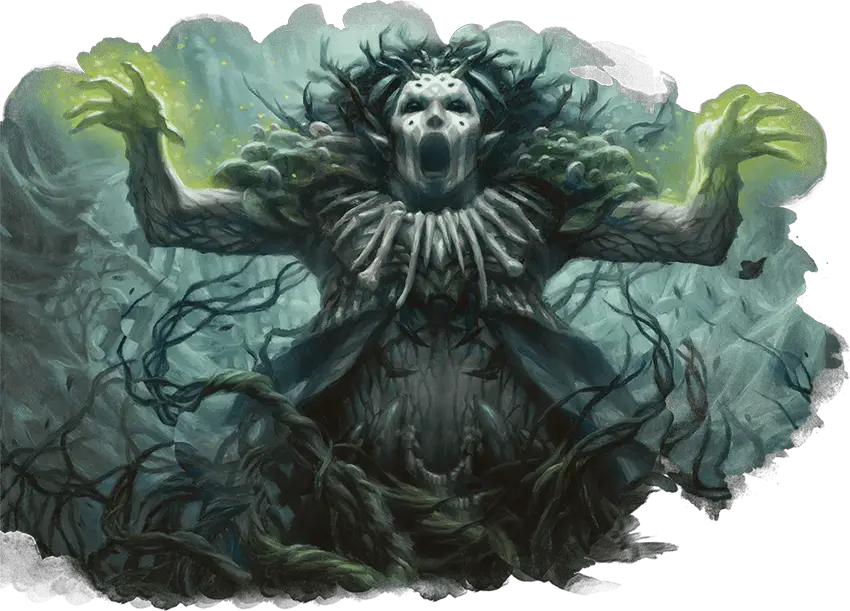
Certainly one of the most interesting takes on the Druid is the Circle of Spores. With an appreciation for the cycle of life and death, these fungal fellows are at their best on the party’s front lines.
With several abilities that allow them to deal extra damage, gain large amounts of temporary hit points, and reanimate fallen enemies to assist the party, the Circle of Spores Druid is no slouch!
If you want to have plenty of options for your turn’s action economy and don’t mind the smell of decomposition, this just might be the Circle for you!
- Halo of Spores (Level 2): An invisible cloud of spores surrounds you. You can use your reaction to deal necrotic damage to a creature within 10 feet of you. The creature must succeed on a Constitution saving throw to avoid this damage.
- Symbiotic Entity (Level 2): Use one of your Wild Shape charges to gain 4 temporary hit points per Druid level, increase the damage from your Halo of Spores, and add an extra 1d6 necrotic damage to your melee attacks.
- Fungal Infestation (Level 6): Use your reaction to reanimate a Small or Medium beast or humanoid that dies within 10 feet of you. The creature rises as a zombie with 1 HP and is under your control for 1 hour before it collapses.
- Spreading Spores (Level 10): You can now throw your Halo of Spores effect up to 30 feet away. It uses the same damage as Halo of Spores and fills a 10 foot cube.
- Fungal Body (Level 14): You cannot be blinded, deafened, frightened or poisoned. The coolest part? Any critical hit against you now only counts as a normal hit unless you are incapacitated.
Circle of Wildfire
Check out our Circle of Wildfire Druid 5e Guide
Fire lies at the primal root of both creation and destruction. Druids of the Circle of Wildfire revere fire for its power and potential. After all, sometimes it’s necessary to burn away the underbrush so that new life has the opportunity to grow!
The Circle of Wildfire Druid walks this line. They are capable of releasing burning destruction upon their enemies while also using those same sparks to aid their allies.
- Summon Wildfire Spirit (Level 2): Use a charge of your Wild Shape ability to summon a primal spirit of wildfire. This spirit can attack and teleport in addition to being used for your other Circle abilities.
- Enhanced Bond (Level 6): While your Wildfire Spirit is out, this buffs your damage from fire spells as well as increasing your healing abilities. Spells can originate from your Wildfire Spirit instead of your character.
- Cauterizing Flames (Level 10): If a creature dies within 30 feet of you, they leave behind a small flame. You can use your reaction to cause these flames to either heal or deal fire damage to a creature that enters that space.
- Blazing Revival (Level 14): If you drop to 0 hit points and your Wildfire Spirit is within 120 feet of you, you can reduce the Spirit’s HP to 0 and instantly regain half of your maximum hit points.
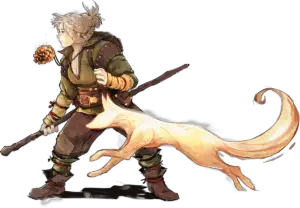
Circle of Stars
Check out our Circle of Stars Druid 5e Guide
While some Druids seek guidance from the plants and animals around them, those of the Circle of Stars look to the skies above for answers.
The Circle of the Stars Druid focuses heavily on the mystical divination aspect of the Druid class. However, versatility is still key and these Druids’ Starry Form opens up still more options so that the Druid can always fill in exactly where they are most needed in the party.
- Star Map (Level 2): You gain a Star Map that functions as a focus for casting your Druid spells. Additionally, you learn the Guidance cantrip and the Guiding Bolt spell. You can cast Guiding Bolt without using a spell slot a number of times per day equal to your proficiency bonus.
- Starry Form (Level 2): Use a Wild Shape charge to take on a starry form. Gain extra abilities based on which constellation you choose when using this ability.
- Cosmic Omen (Level 6): At the end of a long rest, you consult your Star Map to determine any omens for the day ahead. Weal omens allow you to add a d6 to your allies’ rolls. Woe omens allow you to subtract a d6 from enemy rolls.
- Twinkling Constellations (Level 10): All of your Starry Form’s constellations receive buffs. Additionally, you can change which constellation is active at the start of each turn that your Starry Form is activated.
- Full of Stars (Level 14): You are partially incorporeal while using your Starry Form ability. This gives you resistance to bludgeoning, piercing, and slashing damage.
Optimization Tips for Druids in D&D 5e
At the end of the day, play the character that you want to play.
That said, for some players there is a huge amount of fun in creating and playing an optimized character. If you are looking for some tips to help you get the most out of your Druid, this section is for you.
Abilities
Starting with the basics, Druids need to focus on their Wisdom score above all else. Higher Wisdom will make their spells harder to save against, increase the effects of many of their abilities, and help them be more effective in nature with skills like Survival and Perception.
- Strength: There are few situations where you will need Strength and are not able to turn into a stronger animal (like a bear.) Don’t worry about this one.
- Dexterity: Dexterity adds to your Armor Class, Initiative, and import skills like Stealth. With Dexterity saving throws being particularly common in D&D 5e, this is a solid choice for your secondary ability focus.
- Constitution: If you don’t make Dexterity your secondary priority (after Wisdom), then you should focus on Constitution. This directly affects your available Hit Points as well as saving throws to maintain concentration on your spells.
- Intelligence: Intelligence is so-so. While it shouldn’t be your focus, having some extra points in knowledge of nature, religion, and arcana is always helpful.
- Wisdom: As we mentioned, wisdom is your most important skill. Your first priority should be getting this to 20.
- Charisma: You probably won’t be acting as the party’s “face” as a Druid. This can be a dump stat.
Races
While Tasha’s Cauldron of Everything introduced new rules to remove the effects of character race on stats, not all groups might use those rules.
If you are looking to optimize your Druid and aren’t using the new rules from Tasha’s Cauldron, these are the best choices for your character’s race.
- Wood Elf: Wood Elves get a bonus to Wisdom in addition to faster walking speed. With Mask of the Wild they are better able to hide when necessary. The Elven resistance to charms, immunity to sleep, and 4-hour trances mean that this character can stay vigilant.
- Hill Dwarf: Hill Dwarves get a bonus to Wisdom and the extra bump to Constitution is always nice to have.
- Variant Human: Using the Variant Human, you can increase your Wisdom score while also getting a bonus feat. While there aren’t many feats that I would recommend taking before you’ve maxed out your Wisdom score, getting a free feat at level 1 is pretty sweet.
Backgrounds
There’s no “must-have” background that no Druid can be without. There are a few solid options though.
- Hermit: Medicine and Insight skills both rely on your Wisdom ability. Druids already get an herbalism kit, so the one that comes from this background can be retrained into something else.
- Sage: You may or may not have use of the languages gained by this background, but getting two knowledge skills can very handy.
- Acolyte: Much like with the Sage background, the languages from this background don’t really help you too much. Getting the Insight skill in addition to one knowledge skill is useful though.
Feats
Druids don’t particularly get a huge amount of value from most of the available feats. However, there are still some options that are worth considering.
- Observant: Never miss a thing. Your Perception skill will likely be through the roof and the +1 Wisdom bump keeps you on track to max out your Wisdom score ASAP.
- Resilient: Getting proficiency in Constitution saving throws will greatly help you when you need to make concertation checks. Resilient is kind of “meh” at lower levels when compared to the War Caster feat, but it will grow with you well.
- Lucky: There is no class that can’t benefit from this feat.
- War Caster: Primal Savagery as an opportunity attack is pretty powerful, but having an easier time maintaining concentration on your spells is worth its weight in gold!
Conclusion – The Druid in D&D 5e Guide
I hope you’ve enjoyed this guide to the Druid in D&D 5e!
If you have any questions, let me know in the comments! In the meantime, subscribe to the Tabletop Joab newsletter using the form below so that you can stay up to date with all of our latest offerings!

